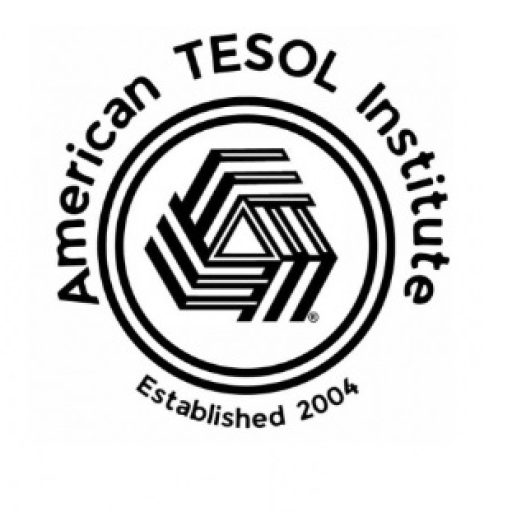The future of English language education is evolving rapidly, and augmented reality (AR) technology is at the forefront of this transformation. With the introduction of Android XR, Google’s next-generation operating system tailored for extended reality, AR is becoming more accessible, immersive, and impactful. This innovative platform promises to revolutionize classrooms by blending virtual elements with the physical world, allowing teachers to engage students in ways never before possible. Coupled with AR glasses emerging from major companies, this technology is shaping up to become the new norm for language learning. Let’s explore how Android XR and other AR innovations are paving the way for exciting opportunities in TESOL education.
What is Android XR?
Android XR is Google’s cutting-edge operating system designed for AR and VR devices, particularly AR glasses and extended reality platforms. XR combines the physical and digital worlds, enabling users to interact with 3D virtual objects seamlessly integrated into their environment. Android XR leverages Google’s expertise in ARCore, their AR development platform, to create realistic and educational experiences for both learners and teachers.
How It Works in Language Education:
Teachers can use AR to make English lessons interactive and visually engaging. Students can view 3D images of objects, environments, or people while practicing vocabulary, grammar, and speaking skills. For example:
- AR Storytelling: Students wear AR glasses or use devices to see 3D animations of scenes from a story, helping them visualize and understand new vocabulary in context.
- Interactive Word Exploration: Learners can see words appear as holograms next to real-life objects. For instance, pointing an AR device at a chair could display the word “chair” alongside its pronunciation and usage in a sentence.
- Role-Playing Scenarios: AR creates virtual environments, like a simulated airport or restaurant, where students interact with digital characters and practice real-life communication.
Will AR Be the Norm for English Learning?
The rise of AR tools like Android XR signals that augmented reality is no longer futuristic—it’s becoming mainstream. AR bridges the gap between digital content and hands-on learning, which is crucial for ESL learners who benefit from visual and experiential methods.
Here’s why AR is likely to become the norm in TESOL education:
- Immersive Learning: AR creates an engaging, hands-on experience that improves retention and comprehension. Students “see” and “experience” words, grammar, and conversations instead of just memorizing them.
- Accessibility: As AR glasses and XR platforms become more affordable, schools and educators will integrate AR into their lesson plans.
- Motivation and Engagement: Younger learners, especially Gen Z and Alpha, are digital natives who thrive in tech-driven classrooms. AR captivates their attention and enhances learning through interactive visuals.
- Personalized Learning: AR tools can adapt to each student’s level, providing tailored lessons and real-time feedback.
In the future, AR will likely complement traditional teaching methods, becoming a standard tool in classrooms and online learning environments alike.
Other Companies Introducing AR Glasses for Education
Several tech companies are competing in the AR glasses market, each providing innovative features and tools that can be utilized for educational purposes. Let’s look at the key players and the educational resources they offer:
1. Meta (Meta Quest Pro and AR Glasses)
Meta has invested heavily in AR and VR through its Reality Labs. The Meta Quest Pro offers mixed reality capabilities, while Meta’s AR glasses are under development.
- Educational Resources:
- Meta Horizon Workrooms for virtual collaboration.
- AR apps that include vocabulary games, interactive storytelling, and 3D language practice tools.
- Platforms like “ENGAGE” allow teachers to create virtual classrooms with real-time AR interactions.
2. Apple (Apple Vision Pro)
Apple’s Vision Pro combines AR and VR capabilities to create immersive learning experiences. Apple’s powerful ecosystem of apps supports education across disciplines.
- Educational Resources:
- ARKit: Apple’s AR development platform provides apps for learning English through games, flashcards, and visual storytelling.
- Apps like JigSpace allow learners to explore objects and words in 3D space.
- Real-time subtitles and AR translations assist students in understanding spoken language.
3. Microsoft (HoloLens 2)
Microsoft’s HoloLens 2 integrates AR with educational tools, making it popular in industries and classrooms.
- Educational Resources:
- Immersive AR classrooms where students interact with lessons projected in their physical space.
- Tools like Kahoot! AR gamify learning by presenting interactive word-building and comprehension activities.
- Real-time interactive translations for ESL learners.
4. Magic Leap
Magic Leap focuses on enterprise and educational AR solutions, providing AR glasses with high-level visualization.
- Educational Resources:
- Magic Leap works with AR developers to create educational games and vocabulary-building tools.
- Platforms like Spatial provide AR meeting spaces for language role-playing scenarios.
Practical Ways to Use AR to Teach English
- Virtual Field Trips
Using AR tools, students can “visit” famous landmarks around the world, like the Eiffel Tower or New York City, while practicing descriptive language and vocabulary. Imagine teaching words like “skyscraper” or “monument” as they come alive in a virtual scene. - Interactive Grammar Games
Create AR-based grammar activities where students manipulate 3D sentence parts (like subjects, verbs, and objects) to build correct sentences. This gamified approach helps learners visualize grammatical concepts. - Pronunciation Practice with AR Visuals
AR can overlay animated mouth movements and phonetic symbols next to words. Students can mimic the movements, improving pronunciation accuracy in an engaging way. - Collaborative AR Projects
Students can work in groups to build interactive stories or presentations using AR tools. For instance, they might design a 3D restaurant menu in English or role-play ordering food in an AR simulation.
Conclusion: Embracing the Future of TESOL with AR
The development of Android XR and AR glasses from companies like Meta, Apple, Microsoft, and Magic Leap is redefining English language teaching. Augmented reality offers immersive, visual, and interactive tools that cater perfectly to the needs of ESL learners, especially children and digital-savvy students.
While AR will not replace traditional teaching, it enhances lessons by adding a new layer of creativity and engagement. By adopting AR tools, TESOL teachers can provide dynamic experiences that make language learning exciting, effective, and unforgettable.
The future of English education is here, and augmented reality is leading the way. Are you ready to embrace it?



